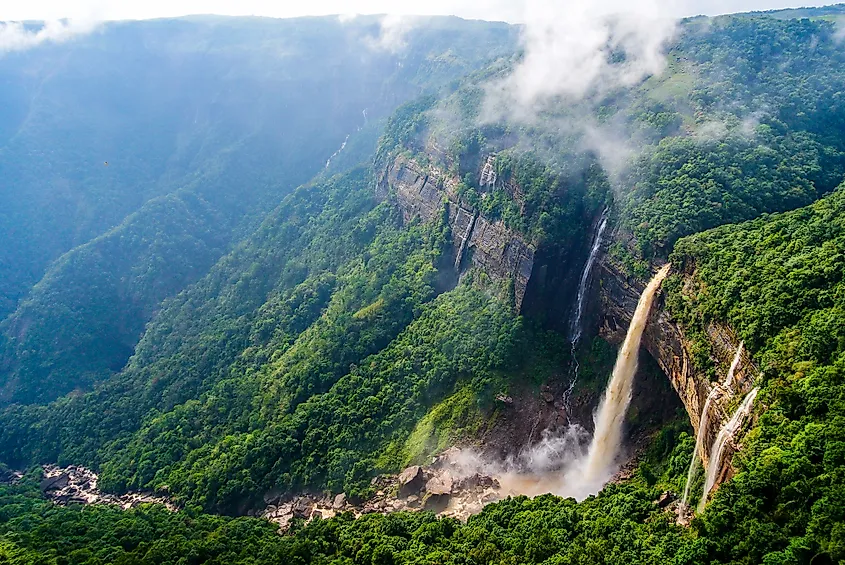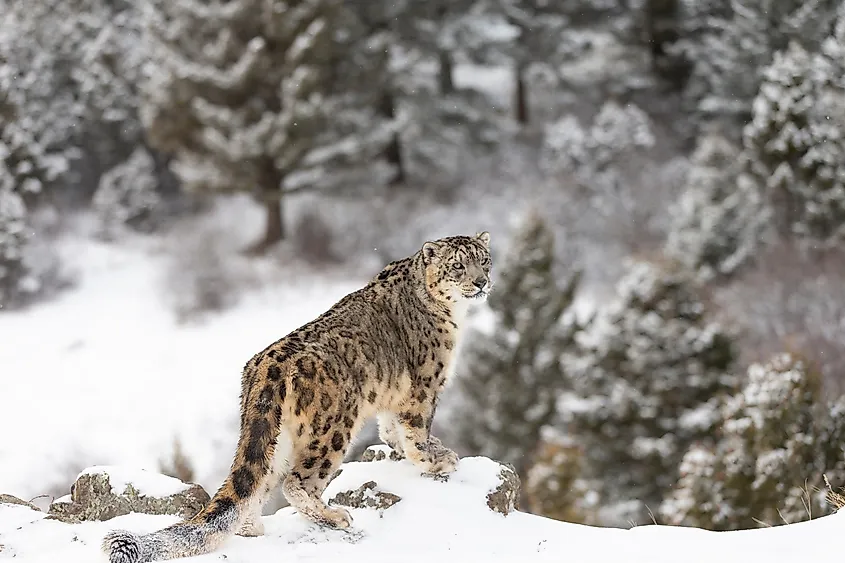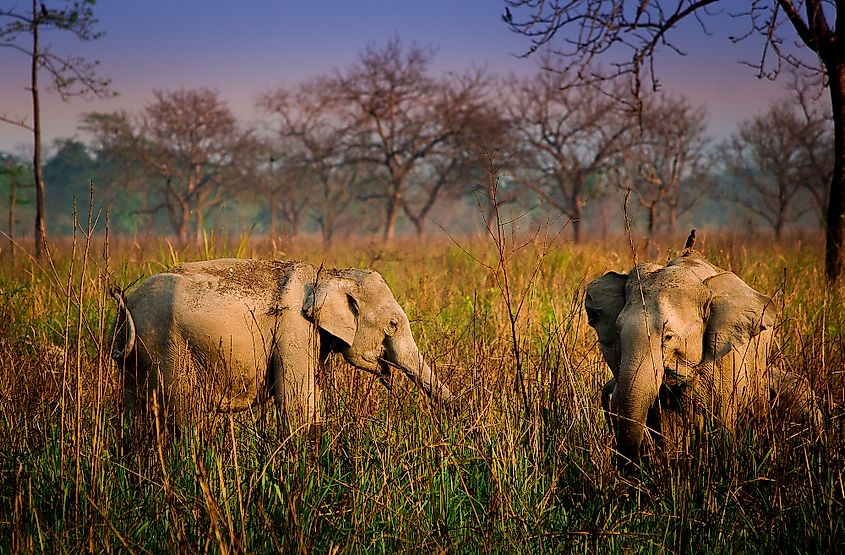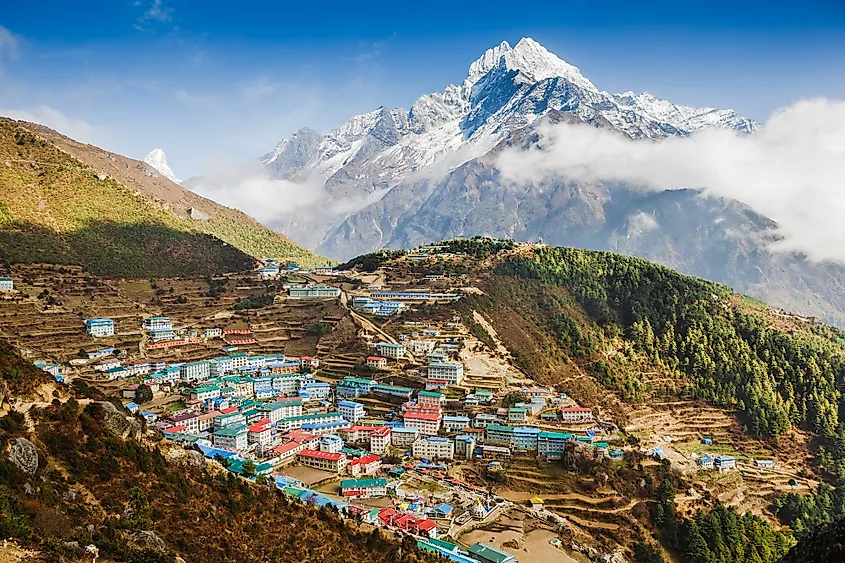Eastern Himalaya Biodiversity Hotspot (original) (raw)

Eastern Himalayan landscape in Nepal.
- The Himalayan Mountains are the highest mountain range in the world that includes Mt. Everest, as well as eight other highest peaks of the world.
- Out of the 9,000 different species of plants, 3,500 plants are endemic to the Eastern Himalaya region.
- Anthropogenic activities including deforestation, fragmentation of habitats, pollution, high population, climate change and poaching of wildlife poses a serious threat to the biodiversity of the region.
The Eastern Himalayas cover a total area of 524,190 sq.km, and extends from Central Nepal’s Koshi Valley to northwest Yunnan in China, including southeast Tibet, Bhutan, parts of India (Sikkim Darjeeling Hills of West Bengal, northeast India), and northern Myanmar. About 38 million people inhabit the region, with a population density of 151 persons per square kilometer. 85% of the population lives in the rural areas, mostly in the plains and the valleys, which are much more habitable than the mountains. The region is also an ecotourism hotspot, serving as a getaway from the overpopulated epicenters of Asia where rich biodiversity of the highlands can be explored.
The Eastern Himalayas are located at the junction of two continental plates, that served as a decisive factor in the high levels of biodiversity and endemism that colluded from both regions. The Eastern Himalayan region is also the meeting point of three biogeographical realms namely, the Indo-Malayan, the Palaearctic and the Sino-Japanese realms. The highlands have exceptionally rich biodiversity, high endemism, and 163 globally threatened species, including the densest population of Bengal tigers, and the three largest herbivores on the continent: the Asian elephant, greater one-horned rhinoceros and wild water buffalo.
Environment

Waterfall in the mountains of Northeast India.
In this birthplace of Buddha, the unique environment has a great impact on the culture practiced throughout the area, instilling unique practices and socioeconomic identities. Existing in symbiotic relations with their environment, the major river systems, sacred valleys and high mountain lakes are all integrated into local rituals and in Hinduism.
Its highest peaks are in the Himalayan Mountains, which is the highest range in the world and includes Mt. Everest, as well as eight other tallest mountain peaks on the planet. Permanent ice and rock are found at the elevations of 5,500-6,000m. After timber, the most important Eastern Himalaya plant product for export is Rattan, known as cane to the rest of the world.
Flora

Alpine plants in full bloom along the slopes of the Himalayas in autumn as mist descends near Tawang, Arunachal Pradesh, India.
The Eastern Himalayas boast one of the world’s richest counts of alpine flora within its temperate broadleaved forests, with a total of 10,000 species of plants. Out of these, 71 genera with 3,160 different species are endemic to the region, including a large number of species from the genus Rhododendron that can be found in great quantities on the hills of the Eastern Himalayas.
With at least 7,500 flowering plants in India, 50% of them are from this region, described as the “cradle of flowering plants”. There are about 700 species of orchids in the north-eastern region of India alone. The Orchidaceae is the largest family, with 750 endemic species, out of which 545 (within 122 genera) are restricted to Arunachal Pradesh region, with 12 being endangered, 16 vulnerable, and 31 near threatened.

Paphiopedilum insigne orchid in endemic to some parts of the Eastern Himalayas.
Many other endemic plants are also threatened, such as the Nepenthes khasiana and the Tetracentron sinense found in temperate deciduous forests. Homalium nepalense is an endemic subtropical tree that grows near the rivers. Likewise, the Alsophila spinulosa loves the humid habitat within gorges.
The medicinal plant Swertia multicaulis is found at high altitudes, and the Saussurea gossypiphora plant has been recorded at 4,300 to 5,600m. Cushion plants can be found as high as 6,100m and above, while the Solms-laubachia himalayensis has been recorded on the Mt. Kamet in the north-western Himalayas, at 6,400 meters.
Fauna
The Eastern Himalayan region is home to 300 mammalian species, 977 avian species, 176 reptilian species, 105 amphibian species and 269 species of freshwater fishes.
Mammals

Snow leopard is one of the iconic species in Eastern Himalayas.
Some of the significant mammals that are found here include langurs, sloth bears, wild dogs, gaur, muntjacs, snow leopards, Asian black bear, Himalayan tahr, red panda, takin, blue sheep, etc. The endemic mammals that are found in the Eastern Himalayas region include the golden langur hispid hare, pygmy hog, and the Namdapha flying squirrel.
The Snow leopards live in the rugged mountains, and are one of the region’s most elusive animals that are difficult to follow closely. Nevertheless, these snow leopards act as indicators of the region’s health, meaning that if they are thriving, so are the other animals in the landscape that they prey on.
The Indian rhinoceros or the greater one-horned rhinoceros (Rhinoceros unicornis) is the largest species of rhinoceros on Earth. Unlike the common rhino, also found in these regions, these are considered endangered. Featuring a black horn about 18.5cm in length, and an armour-like skin, they are mega-herbivores and solitude-lovers. This particular animal holds an emblematic image to the local communities and has contributed greatly to the ecotourism of the Eastern Himalayas.

Red panda in the forests of Eastern Himalaya.
Unlike the commonly depicted clumsy black-white pandas, the red panda is a highly acrobatic animal, slightly larger than a cat with reddish-brown fur, black belly and limbs, and white markings on the sides of its head and above its eyes. 50% of these arboreal animals have chosen the Eastern Himalayas as their primary home. When it gets cold, they cover themselves up with their bushy tails.
The Gangetic dolphin (Platanista gangetica) is one of the oldest animals in the world, officially declared by the government of India as the National Aquatic Animal in 2009. Just like the Snow Leopard indicates the health of the land it inhabits; the Gangetic dolphin reflects the well-being of the freshwater systems and its inhabitants. Being almost completely blind, they hunt by emitting ultrasound signals, which bounce off of their prey, allowing them to “view” the image in their mind.

Elephants in Manas National Park, Assam, India.
The Asian Elephant is the largest mammal on the Asian continent. As a very sociable creature, the female counterparts gather in groups of 6-7, and sometimes join other groups for short periods of time, as if to gossip or chat about life. Their varied diets contain grasses, tree bark, roots, leaves and stems, as well as bananas, rice, and sugarcane.
There is a unique Hindu legend associated with these symbolic-to-the-region animals. When the gods (deva) and the demons (asura) were searching for immortality, they turned the ocean, and one of the nine jewels that surfaced, was an elephant. Today, the deity that is honoured before all the rituals is the elephant-headed Lord Ganesha, also known as the Remover of Obstacles.
Birds

Himalayan monal in the Eastern Himalayas.
Out of the 977 birds that have been noted in the region, only 15 are endemic. Some of the most threatened winged representatives are the Endangered white-winged duck (Asarcornis scutulata), the Critically Endangered white-bellied heron (Ardea insignis), and the Critically Endangered Bengal florican (Houbaropsis bengalensis).
Some of the endemic birds that are found in the Eastern Himalaya region include the Manipur bush quail, Blyth’s tragopan, chestnut-breasted partridge, Sclater’s monal, Tibetan eared pheasant, Temminck’s tragopan, and the rusty-bellied shortwing.
Reptiles

A gharial in Nepal's Chitwan National Park.
176 reptile species have been recorded in the Eastern Himalaya Hotspot, with roughly 50 being endemic. The Abor Hills agama (Pseudocalotes austeniana) is only known by the holotype described initially from Arunachal Pradesh’s Eaglenest Wildlife Sanctuary. Other, well-studied endemic genera include Oligodon, Japalura, and Cyrtodactylus
Amphibians
There are 105 species of amphibians living in the Eastern Himalayas, with over 40 being the endemic frogs and toads. Ichthyophis sikkimensis is endemic and is exclusively found in northern India and the extreme edges of Nepal, at elevations between 1,000 and 1,500m.
Freshwater Fish
The fishes that occupy the freshwaters of the Eastern Himalaya Hotspot come from the three major drainage systems: the Ganges, Indus, and Brahmaputra. 30 of the nearly 269 known species of freshwater fish are endemic to the region. Although the fish are largely understudied, 7.2% are classified as threatened, while 5.4% are classified as near threatened.
Environmental Threats

Deforestation along the slopes and forests of the Himalayas near Tawang, Arunachal Pradesh, India.
Much of the fauna and flora of the region is considered endangered, including the famous one-horned rhino, once popular throughout the entire region. Its count plummeted with overhunting to 200 individuals, at the start of the 20th century. Responding to the emergency of the situation, great effort was put into salvaging these iconic animals, some of which are now thriving in a protected environment.
Poaching remains a serious problem for biodiversity in the Eastern Himalayas, especially when it comes to overhunting the endangered tigers (Panthera tigris) and the endangered red panda (Ailurus fulgens) that are poached for fur. The vulnerable greater one-horned rhinoceros (Rhinoceros unicornis) are still hunted for their horns, traditionally used in Chinese medicine, while the vulnerable snow leopard (Panthera uncia) is also sought for its coat.
Charcoal production is popular in the lowlands, while the highlands are used for cattle grazing, both of which are detrimental for the environment. The forests of the Eastern Himalayas are exploited for timber, fodder, and fuelwood through complete clearage of land, resulting in the loss of unique plant species, as well as the food source and habitat for many of the forest-dwelling animals. Mining, construction of roads and dams, pollution from agrochemicals all pose a serious threat to the biodiversity of the Eastern Himalayan forests.

Pollution of River Bagmati in Nepal.
Pollution is also prominent in the Ganga and Brahmaputra rivers, while the clearing and degradation of forests leads to sedimentation, changes in flow regimes, and the development of dams. All of this has had a major impact on the quality of life of the aquatic creatures, diminishing the great biodiversity and putting many of the endemic species at risk of extinction.
Land is also being cleared for construction of new houses and buildings to meet the increasing needs of the burgeoning population. Deforestation and habitat fragmentation is especially worrisome in Nepal, and the Indian states of Sikkim, Darjeeling, and Assam. Now living in the places previously roamed by wild cats, farmers are able to obtain insurance that compensates them for the loss of cattle that has fallen prey to the snow leopards. This practice has been installed with a purpose to lessen the human-animal conflict.

Construction activities have led to large-scale deforestation in the Eastern Himalayas.
Climate change is another major threat to the rich biodiversity of the Eastern Himalayas. It also affects the lives of the locals in their inability to access water from the dried-up streams for drinking or agricultural activities. The cycle of crops has been interrupted by the changing weather, with monsoons being dispelled out of schedule to result in flooding of the land and inability to harvest the following year. This greatly threatens the food security of the entire region, and affects the economy by decreasing export.